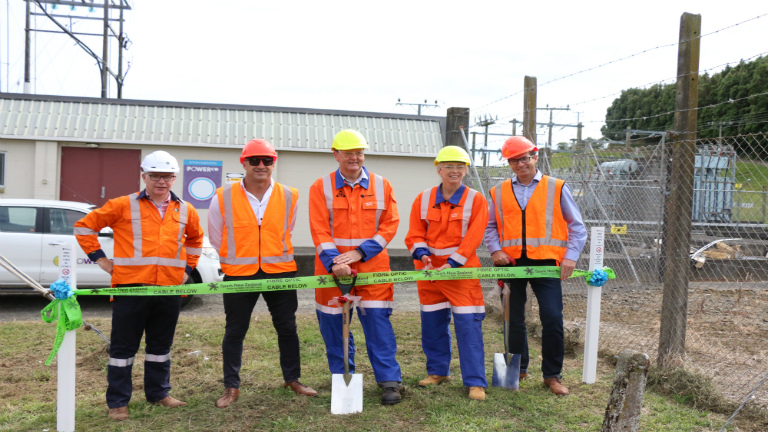Please configure
Spark’s joint Fibre build gains traction in Taranaki
Spark announced today plans to work in partnership with Chorus, Transpower and Powerco to extend the backhaul fibre infrastructure in the Taranaki region.
The Spark led initiative is one of the largest multi-party on land fibre infrastructure projects to date, with work beginning south of New Plymouth in Eltham recently.
It’s the second joint build Spark has undertaken as part of its Fibre Collaboration plan which aims to get
telecommunications and utility companies working together to reduce the cost of infrastructure development, provide more resilient local and national fibre networks, and reduce frustration to residents caused by roads being dug up multiple times.
With a joint investment of about $20 million, the build will add 286km of fibre to Spark’s backbone fibre infrastructure adding resiliency.
Spark’s National Fibre Network is the backbone of the company’s network.
Spark is one of New Zealand’s largest investors in fibre optic infrastructure with over 8,300km of fibre and believes that through a new collaboration process, it could significantly increase the usual level of fibre deployment, with no pass-through of costs to the consumer.
Spark owns its own network of high speed fibre around the country, mostly between
towns and on main arterial routes providing backhaul for data traffic and mobile sites. This differs from the fibre in residential areas which is laid by other network providers as part of the Ultra-Fast Broadband (UFB) initiative.
Spark’s General Manager of Physical Infrastructure Rob Berrill says joint fibre deployment projects like this one prove there are opportunities for telcos and utility companies to work more efficiently together to benefit all New Zealanders.
The goal of the Fibre Community Collaboration project is to transparently outline Spark’s fibre
plans to encourage wider collaboration, ultimately delivering a higher level of connectivity, and less disruption to New Zealanders.
“Our fibre network has been constructed over the last 30 years by a combination of solo and joint builds. Typically, we’ve kept these plans confidential due to commercial sensitivity, but we believe the long-term opportunity to collaborate with others outweighs any short-term commercial considerations. Collaborating on the build process allows us to share the large costs, and minimise environmental and civil disruptions, like road works. We know how frustrating it can be when the same stretch of road is dug up numerous times. Collaboration also means multiple projects can be under construction at the same time.”
“There will always be some circumstances where infrastructure will need to be built in the same place twice. But by co-ordinating and disclosing our planswe hope to minimise this disruption and share costs.”
Notes to the editor
Spark’s National Fibre Network is one of Spark’s most important assets that form the
foundation layer of the products and services we provide to our
customers.
This is the network that provides the backhaul, or to put another way, is the backbone network that all of our services stems from and rely on for resiliency.
Electricity utility companies rely on fibre infrastructure to monitor, control and protect assets.

Chloe Ferrand
+64 27 359 3077| Chloe.Ferrand@spark.co.nz
Please configure








